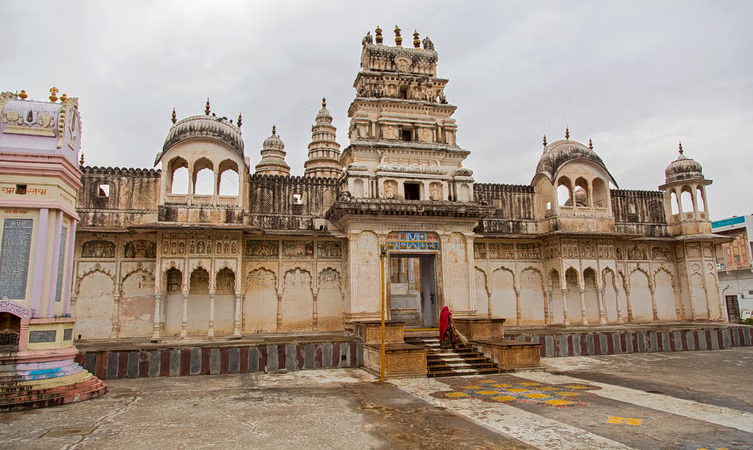Rangji Temple, located in the holy town of Pushkar in Rajasthan, is one of the most prominent and architecturally distinct temples in the region. Dedicated to Lord Rangji, an incarnation of Lord Vishnu, the temple was built in 1823 by Seth Puran Mal Ganeriwal, a wealthy merchant from Hyderabad. What makes the Rangji Temple unique is its fascinating fusion of South Indian (Dravidian), Mughal, and Rajput architectural styles.
As you approach the temple, you are greeted by an impressive gopuram (gateway tower), which is a distinctive element of South Indian temple design. The tall and ornately carved gopuram stands in contrast to the more common Rajasthani architectural style found throughout Pushkar, making the temple stand out. The inner sanctum houses the idol of Lord Rangji in a reclining position, and the beautifully adorned sanctum is a serene and spiritually uplifting sight for devotees and visitors alike.
The temple complex is expansive, with intricately carved pillars, large courtyards, and ornately painted ceilings. The sanctity of the place is heightened by the continuous chanting of prayers and the occasional sound of temple bells that echo through the corridors. Several smaller shrines within the temple premises are dedicated to other deities including Lord Krishna, Goddess Lakshmi, and Lord Ramanuja, reflecting the temple’s roots in the Vaishnavite tradition.
Rangji Temple holds a significant place in the religious life of Pushkar. It attracts thousands of devotees and tourists throughout the year, especially during the Pushkar Fair, one of the largest camel and livestock fairs in the world. During this time, the temple becomes a hub of activity, with colorful decorations, religious processions, and cultural performances.
Unlike most temples in Pushkar which are dedicated to Lord Shiva or local deities, Rangji Temple reflects the South Indian Vaishnavite influence, which is relatively rare in Rajasthan. The temple priests also hail from South India, further emphasizing this cultural blend.
Photography is generally restricted inside the temple, so visitors are encouraged to soak in the spiritual atmosphere without distractions. Modest dress and respectful behavior are expected from those entering the sacred premises.
Located on the main road leading to the Pushkar Lake, Rangji Temple is easily accessible by foot or rickshaw. Its central location makes it an ideal stop during a walking tour of Pushkar’s temples, ghats, and markets.
In conclusion, the Rangji Temple is not only a place of worship but also a symbol of India’s rich cultural and architectural diversity. Its unique style, spiritual significance, and tranquil atmosphere make it a must-visit destination for anyone traveling to Pushkar.
